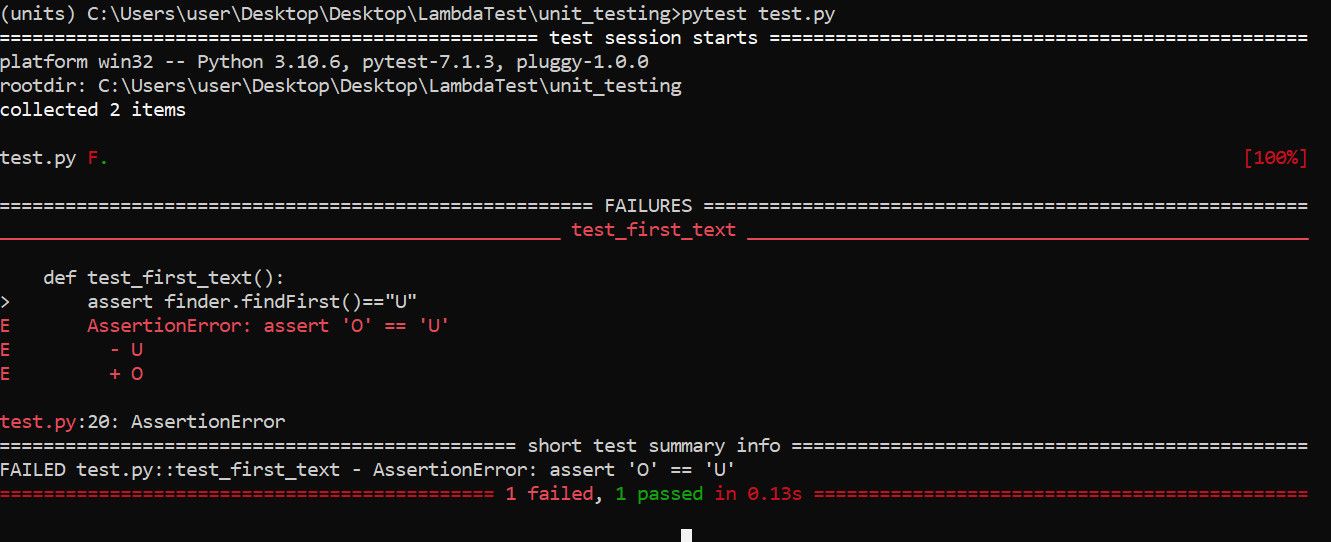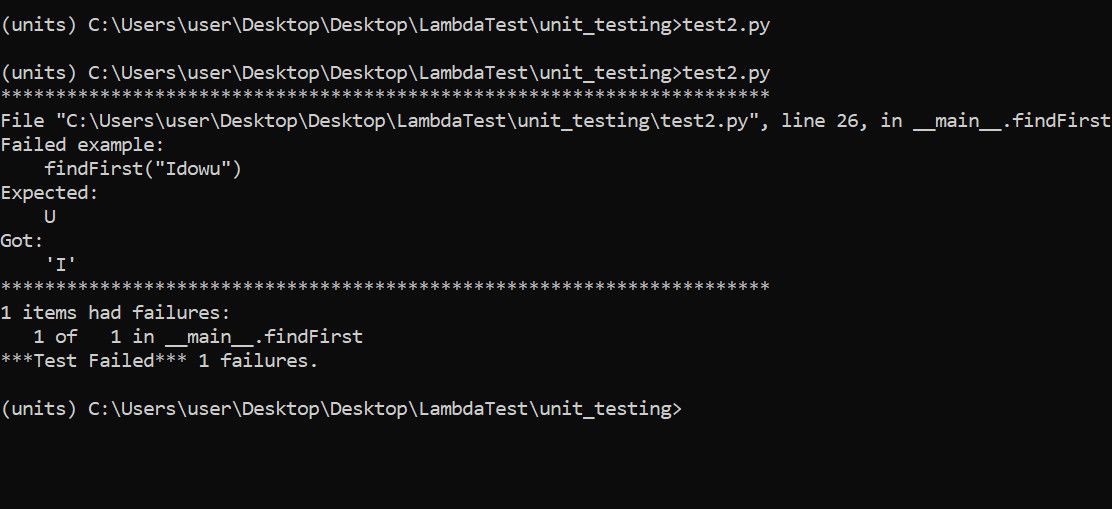Python’s simplicity makes it one of the best programming languages for writing automated tests.
The language offers a couple of software testing frameworks to help you test more efficiently.
Pytest
Pytest is a simple testing framework written in Python and for Python.

Why should you use it for testing?
It has an easy learning curve and is a go-to framework for unit and integration testing.
It also supports class inheritance from unittest.

For instance, validating a code output is as straightforward as calling anassertkeyword.
If you want to run multiple tests simultaneously, Pytest saves time with its headless parallel testing feature.
Pytest also supports command-line execution of test suites.

This is as simple as running thepytest commandfrom the test folder terminal.
You don’t have to bother about the test files, as the framework detects them automatically.
However, the command also works with file declaration.
Playwright
The playwright framework is Microsoft’s offering to the software testing community.
While many frameworks operate headless-only testing, Playright supports both headless and head modes.
Feature-wise, Playwright is close to Selenium.
It matches the latter for cloud-based parallel testing and orchestration tools.
But it beats Selenium with its API-testing functionality.
Playwright’s parallel testing can be tricky, thoughsince its event loop only runs single test capability by default.
However, it’s possible for you to find your way around this withsuitable use of Python loops.
If you want to go codeless, you might use Playwright’s codegen to write test code dynamically.
It generates a language-specific test file as you interact with the DOM.
Playwright has default auto-wait.
Thus, it pauses for the DOM to load before running test cases.
Selenium
Selenium is one of the most-used automation testing frameworks with good community support.
Unlike Playwright, it doesn’t offer API-testing capability.
So it’s not the framework for testing backend logic.
But it does provide both Chromium and non-Chromium-based web client drivers to assess and validate the UI.
The framework has more programming language support and is more versatile in general web automation.
It also accepts cloud grid capability for orchestrating test cases in parallel.
Thus, it’s an excellent choice for cross-surfing app and cross-platform testing.
Selenium has an array of dedicated selectors that let you interact with the UI as a regular user.
Selenium also has an IDE extension for Chrome and Firefox.
This offers record-and-play testing.
But unlike Playwright’s codegen, it doesn’t generate test code.
Robot
Robot is a keyword-driven, open-source Python testing framework.
Overall, it makes test automation as easy as possible.
While you have to write code for test cases in other frameworks, it’s plain English in Robot.
So it comes in handy for writing more human-friendly test cases.
Its strength is acceptance testingto ascertain that software meets specified criteria.
Beyond testing, it also features general robotic automation tools for automating UI tasks.
Then prepare test cases for each in separate files.
Robot provides little testing functionality, but you might extend this with other testing libraries.
Doctest
Doctest is a built-in Python testing library that lets you document your code as you test.
It’s one of the best choices for executing unit tests.
But it also supports UI component testing.
The library is intuitive, reading docstrings from your code and validating your expected output.
Doctest works by checking a function against a set output.
It only throws an error and returns the correctly computed output if your expected result is wrong.
Test output in Doctest is clean.
Unittest
Unittest provides one of the most structured ways to write unit tests.
It supportsobject-oriented programmingby default.
It wraps test cases in dedicated classes and executes them in an event loop.
Unittest doesn’t offer UI testing by default.
But you could pair it with another testing framework like Selenium to get multiple internet tool capabilities.
you’re free to also run parallel tests with unittest when paired with cloud grid-supported frameworks.
Thus, you might leverage its power in integration and end-to-end testing.
Nose2
Nose2 is closely related to Pytest in functionality.
However, it inherits its core properties from the unittest framework.
It supports both unit and integration testing.
It also accepts parameterized testing.
This involves inserting test parameters like test browsers and platforms inside a decorator.
you’re free to then access each parameter within the code body.
This makes Nose2 one of the best frameworks for running cross-surfing app tests in parallel over cloud grids.
While some testing frameworks are primarily Python-based, others support multiple programming languages.
Although it’s best to keep unit tests to your development language, can be more language-independent.
Feel free to use any of these Python testing frameworks accordingly.